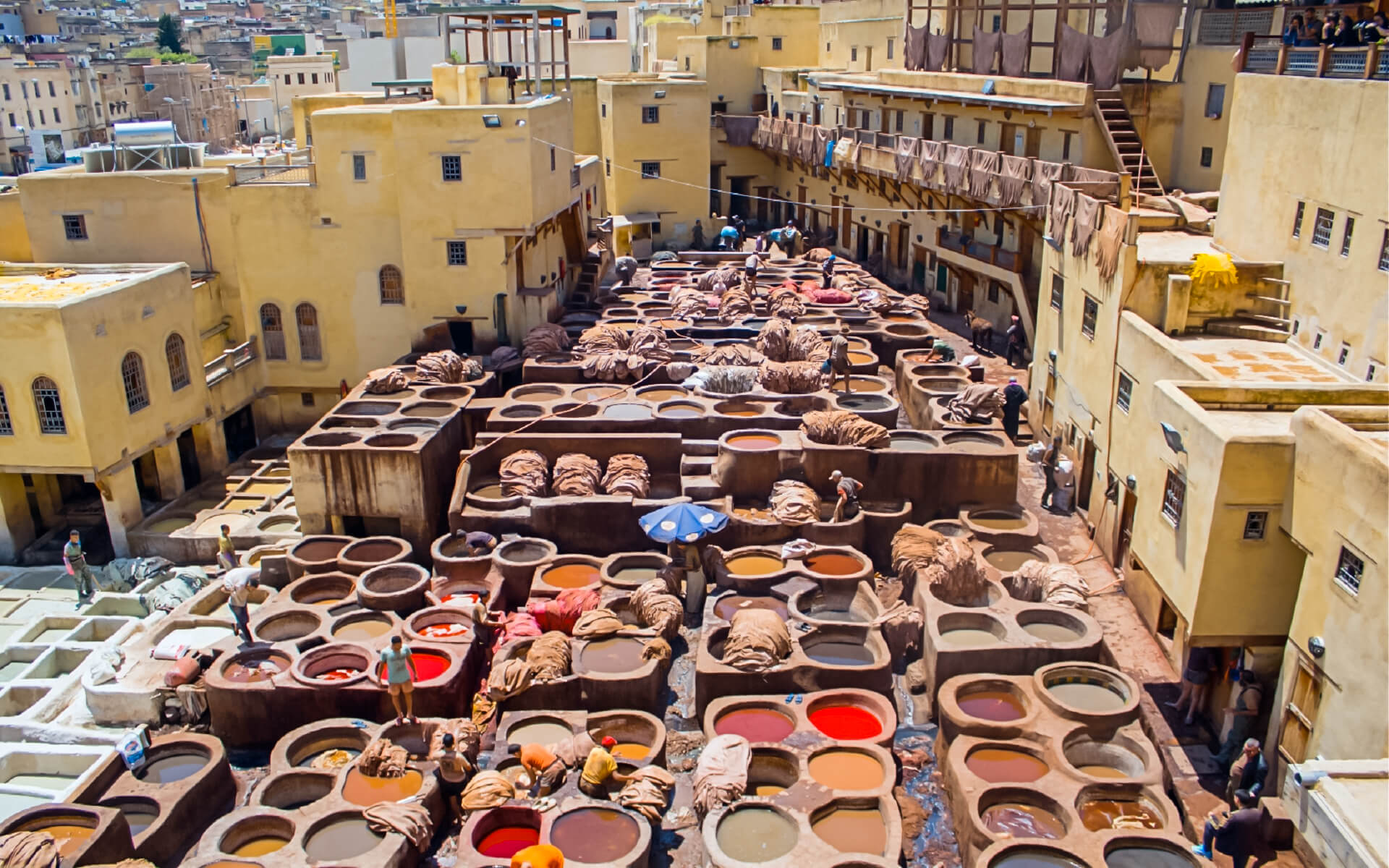Snack Omar
Rue de la Poste (Batha area, around the corner of the Postoffice,), +212 535 74 19 23, +212 6 66 20 22 30. 10AM – 11PM.
The restaurant has a simple design with a take-out counter, yet it is quite comfortable, clean, and serves excellent meals. A excellent restaurant for a dinner party of up to 15-20 people or a late-afternoon snack. Traditional Moroccan dishes such as Tajines, Pastilla, and Meschwi are available, but you may also order Pizza or Spaghetti if you want. The workers are quite kind and greet you as though you were a welcome visitor. The food is delicious, and the prices are reasonable. For example, a Tajine costs 45 MAD! You should definitely try the Pastilla or the Meschwi, both of which are delicious (order the last one in advance).
Mezzanine
17, Kasbat Chams (In front of the jnaj sbil garden, less than 50 meters from the place Boujeloud), +212 11078336, e-mail:[email protected].
Mezzanine is a three-story restaurant with an extra outside patio that has a nice lounge bar for a quiet and tapas as well as a wide comfortable sitting space for meals and groups.
Le Kasbah
(near Bab Boujloud)
Friendly service, a good assortment of affordable Moroccan staples (great vegetarian tagine), and a couple of gorgeous high terraces with views over the Gate and the medina on one side and the medina on the other. It’s a relaxing atmosphere in which to meet other travelers and a nice respite from the hustle and bustle of the medina’s busy streets. It is permissible to consume street cuisine on the terraces. You simply have to pay for the drink and the service.
Fez Lounge
+212 535633097. 95, Zkak Rouah- Tala Kbira
The latest addition to the medina scene is along the Tala Kbira, on a short street on your right)or F Lounge. Fez Lounge is highly recommended for its Mediterranean influenced tapas such as Camembert bruschetta with walnuts and balsamic vinegar or its famed warm brownie with chocolate, with dark grey tadelakt walls and an aura of an ultra modern Arab fantasy. Pastilla and tajines, two traditional Moroccan meals, are also offered. From the design of the tables to the dark lighting and Hotel Costes Music, you can sense the Italian influence.
Café Medina
(near Bab Boujloud)
Delicious and cozy café-style eatery, however it may get too touristic. The food is excellent, particularly the “boricuas” (deep fried thin dough layers wrapping meat-chicken-rice fillings). The mains begin at 60dh.
Restaurant Bouinania
(near Bab Boujloud)
On the carpeted second floor, enjoy a leisurely lunch on the patio or a leisurely evening. The service is quite pleasant, and they are more than eager to fire up the grill and prepare the first brochettes of the day for you. The tagine, couscous, and other essentials are cooked to perfection. Prices start at roughly 40 dh, but may be negotiated down to 25 dh.
Cafe Clock
(near Bab Boujloud)
A beautifully preserved home in the ancient medina has been converted into a café. The folks are kind (and speak English), and the meal is delicious. Request a seat on the patio and listen for the call to prayer coming from one of the nearby minarets. Bring a camera with you, particularly if you’re going during the day.
Restaurant Typique Marocain Jenno
+212 0611073294. Address 1112 Ouad Zhoun, Fes Medina.
Salad and main course are 50Dh. Couscous has a lot of flavor. The proprietor is fluent in English and has a lot of intriguing tales to share.


